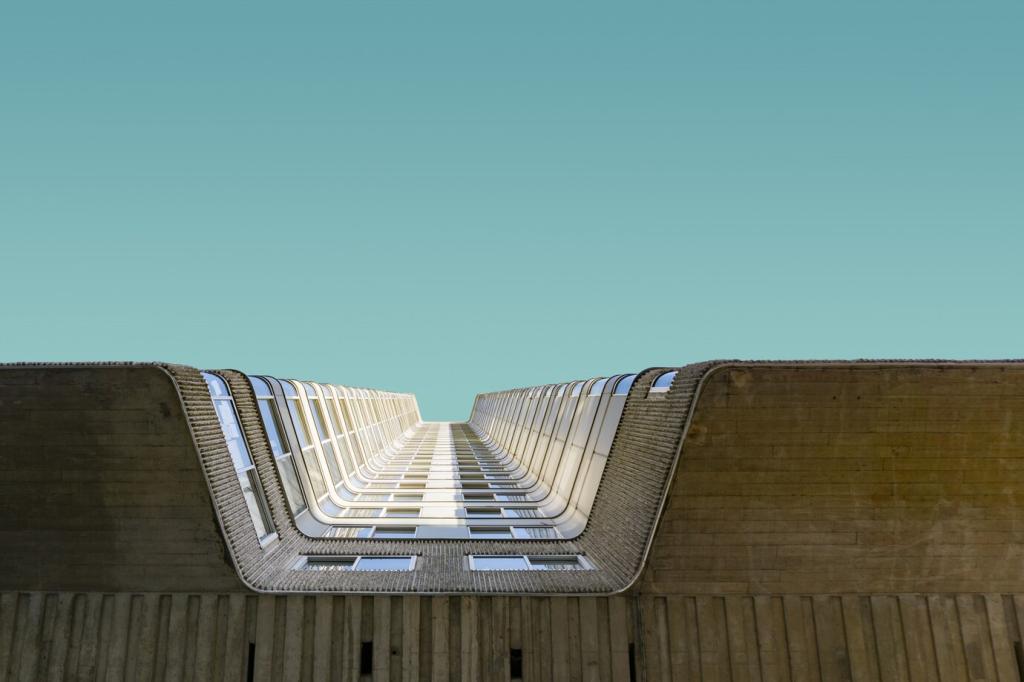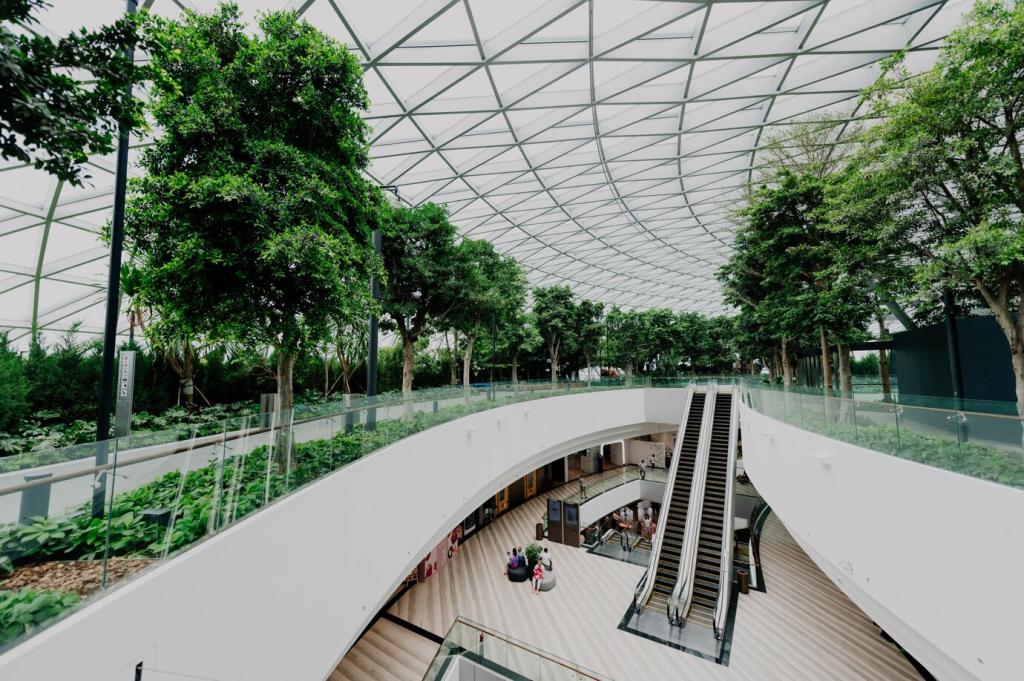Innovative Designs in Sustainable Urban Architecture
Sustainable urban architecture is shaping the future of cities by prioritizing environmentally conscious design, resource efficiency, and vibrant community spaces. Today’s architects are reimagining cityscapes to address population growth, climate change, and the need for liveable, resilient habitats. Innovative approaches blend technology, natural elements, and social considerations to create urban environments that not only reduce carbon footprints but foster well-being and inclusivity. Explore the forefront of sustainable design and how it is being woven into the fabric of modern urban life.

Vertical gardens and living walls are revolutionizing the appearance and functionality of buildings. These plant-covered facades act as natural air filters, absorbing carbon dioxide and releasing oxygen, while also providing insulation that reduces the need for heating and cooling. From commercial skyscrapers to residential complexes, living walls offer aesthetic appeal and create micro-habitats for birds and insects, reinvigorating city spaces with life.

Energy-Efficient Building Techniques
Passive solar design leverages building orientation, window placement, and thermal mass to optimize natural light and heat management. By carefully considering the movement of the sun throughout the year, architects minimize reliance on artificial heating and lighting, dramatically reducing energy consumption. Modern projects use advanced materials and sophisticated modeling to refine passive solar strategies, achieving both comfort and sustainability.

Adaptive Reuse of Urban Structures
Repurposed Industrial Sites
Old factories, warehouses, and mills are being repurposed into offices, homes, and cultural venues with sustainable upgrades. These transformations retain historical character while incorporating green building systems and materials. By breathing new life into industrial relics, architects foster mixed-use communities, create jobs, and extend the lifecycle of existing structures.
Conversion of Parking Garages
With shifts toward public transit and shared mobility, parking garages face obsolescence. Visionary projects convert these structures into affordable housing, rooftop gardens, or multi-purpose hubs. Structural adaptations address ventilation, natural light, and access, demonstrating ingenuity and adaptability in responding to urban evolution and sustainability goals.
Historic Preservation with Green Retrofits
Historic buildings are valuable cultural assets, and green retrofitting enhances their performance without erasing their legacy. Careful interventions—such as installing energy-efficient windows, improving insulation, and integrating renewable energy systems—allow iconic structures to meet modern sustainability standards, ensuring they endure for future generations in climate-conscious cities.
Water Management Innovations
Rainwater harvesting captures and stores precipitation for landscape irrigation, cooling, or non-potable indoor uses. Modern systems are seamlessly integrated into roofs, facades, and public plazas, maximizing water capture without detracting from architectural aesthetics. These installations alleviate pressure on municipal systems, reduce runoff, and empower communities to be proactive water stewards.
Previous
Next
Sustainable Materials and Construction Methods
Low-Carbon Concrete Alternatives
Traditional concrete production is highly carbon-intensive. Architects are shifting towards alternatives like geopolymer cement, recycled aggregate, or carbon-cured concrete, which significantly reduce embodied carbon. These materials provide comparable strength and durability, supporting the construction of resilient infrastructure while shrinking the overall environmental footprint.
Cross-Laminated Timber (CLT) Construction
Cross-laminated timber is revolutionizing mid- and high-rise construction with its renewable provenance and carbon-sequestering properties. Prefabricated CLT panels simplify assembly, reduce waste, and expedite construction timelines. The warmth and natural aesthetic of timber complements sustainable design, offering a compelling alternative to steel and concrete in urban structures.
Modular and Prefabricated Components
Modular and prefabricated construction involves assembling building sections offsite, optimizing material use and significantly reducing waste. These methods also minimize onsite disruption and can streamline the delivery of affordable, high-quality housing in urban areas. With careful design, modular components can be disassembled and reused, supporting circular building practices and sustainable urban growth.
Previous slide
Next slide
Transit-Oriented Urban Form
Dense, Mixed-Use Nodes
High-density, mixed-use nodes concentrated around transit stations optimize land use and accessibility. Residents benefit from convenient proximity to work, shopping, and entertainment, encouraging a vibrant, car-free lifestyle. This urban form supports efficient infrastructure investments and reduces per-capita energy consumption, spotlighting the synergy between urban planning and environmental sustainability.
Active Mobility Infrastructure
Architects are prioritizing networks for pedestrians and cyclists, providing safe, attractive pathways integrated with city transit. Enhanced sidewalks, protected bike lanes, and end-of-ride facilities encourage active transportation choices, improve public health, and lower greenhouse gas emissions. These innovations foster equitable and accessible mobility, transforming how city dwellers move and interact.
Mobility Hubs and Multimodal Fusion
Mobility hubs are strategically designed centers that connect various transport modes, including buses, trains, bicycles, and shared vehicles. By simplifying transfers and providing real-time information, these hubs make sustainable transport choices seamless and attractive. The thoughtful integration of technology and design facilitates low-impact travel, advancing the vision of connected, sustainable cities.
